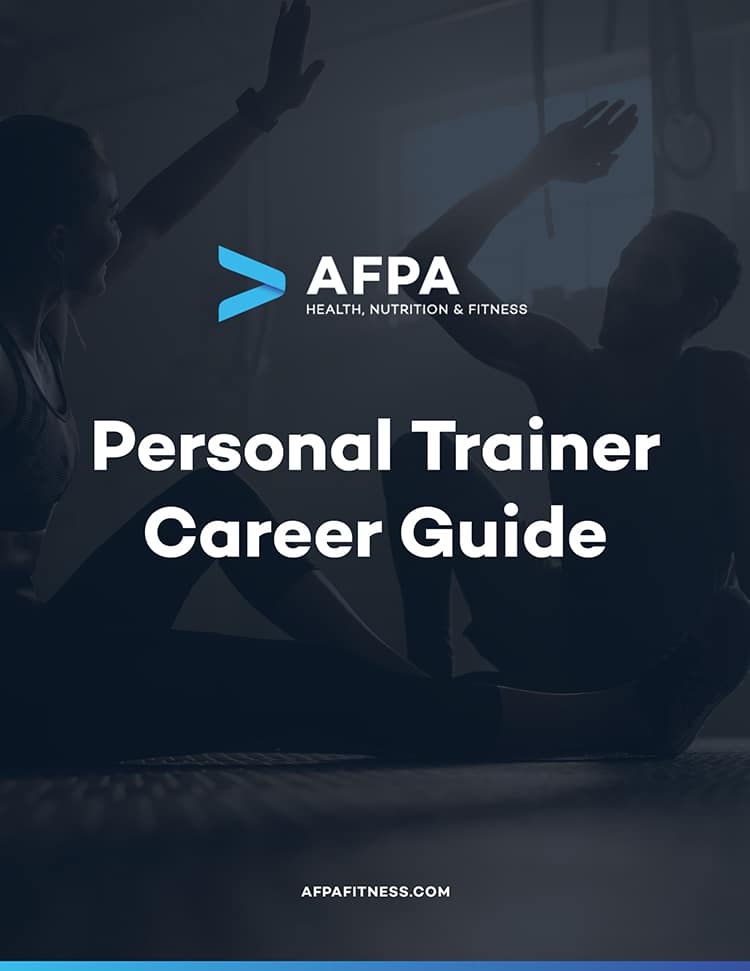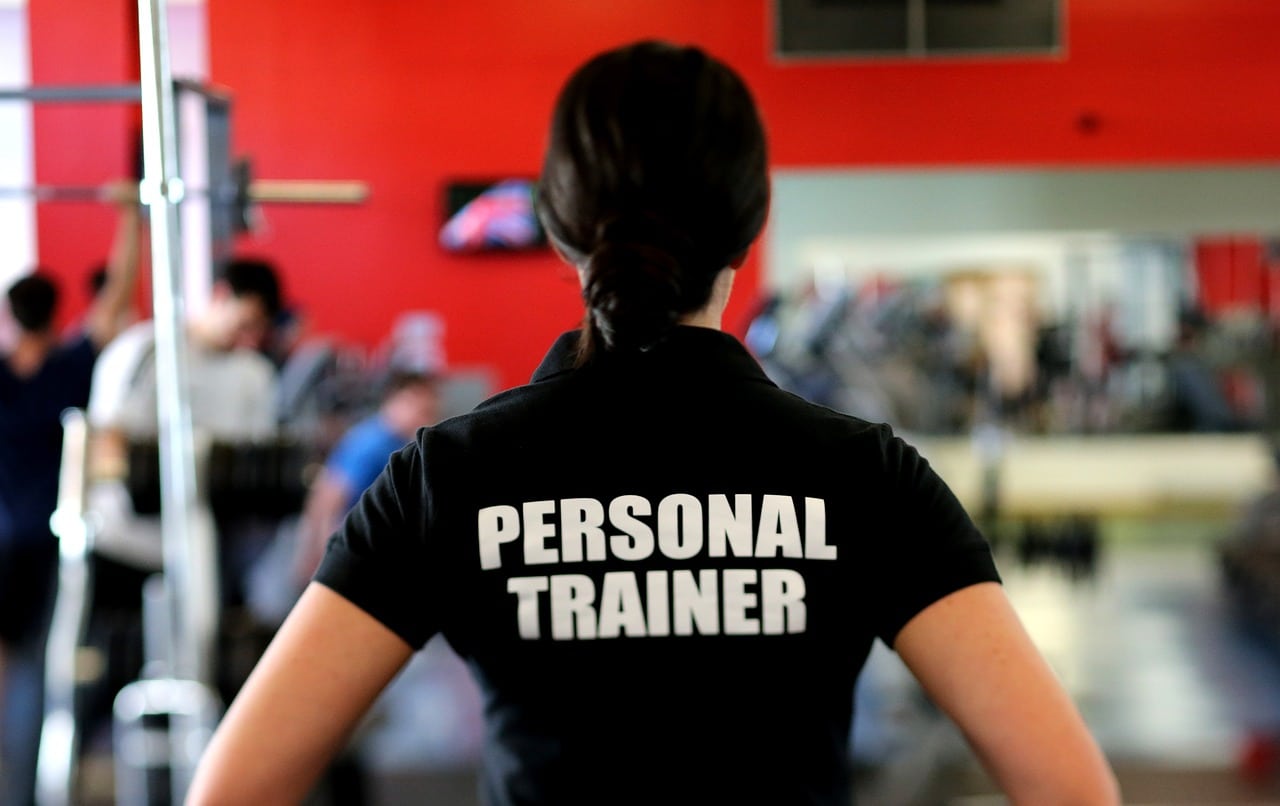As excited as you may be about inspiring, motivating, and transforming lives as a fitness instructor in Canada, don’t forget to obtain the relevant certification first.
While coaching others without certification is unlikely to land you in legal hot soup (note: Canada’s fitness industry remains unregulated), many gyms, studios, fitness centers, health clubs, and prospective employers, including individual clients, choose only to hire certified fitness instructors. This comes down to quality, safety, and liability reasons.
But getting certified can be a tricky process peppered with difficult questions, like:
- Which school or certifying body in Canada should you go for?
- Are local fitness certification agencies your only option? Or can you pursue certification from elsewhere (e.g., US-based accrediting agencies)?
- How much time will you need to spend on studying daily or weekly?
What now? Read this article. It’ll lift the veil on all the steps you should take to get certified as a fitness instructor in Canada—getting you one step closer to landing your dream job.
#1: Decide What Kind of Fitness Instructor You’ll Be
First things first, give some thought to the type of fitness instructor you wish to be:
- What do you wish to teach? “Fitness instructor” is an extensive term spanning a multitude of career options, from personal trainers to yoga, Pilates, kickboxing, indoor cycling, and martial arts instructors … you get the idea. If you’re struggling to pick an area of “specialization,” look toward your daily life. What do you enjoy most? Is it those spinning classes? Then consider pursuing an indoor cycling instructor certification.
- How do you wish to teach? Will you teach part-time or full-time? (This impacts your choice of employers.) Are you interested in conducting one-on-one or group lessons? (You’ll have to get a group fitness instructor certification with the latter.)
- Where do you wish to teach? If you’d like to conduct in-person lessons, your options could include gyms, studios, community centers, school gymnasiums, hotels, and even the great outdoors. Wish to maximize your impact by removing geographical constraints? You can also consider hosting your services online (e.g., live and pre-recorded sessions). Note that in-person and online lessons aren’t an “either-or” choice. You could always offer a combination if it makes sense for you.
#2: Find a Suitable Fitness Instructor Certification Program
Now that you have a good idea of the type of fitness instructor you’ll be, it’s time to look for suitable certification programs.
As mentioned earlier, though, the fitness industry in Canada is unregulated.
This makes it easy for profit-hungry, fly-by-night providers to flood the market with subpar certification programs accredited by questionable third parties. Not only do these programs fail to prepare you for a lasting fitness career, but they’re also not recognized by most discerning employers.
So, how can you distinguish between recognized fitness certifications and those that are nothing more than a piece of worthless paper? Answer: Look at the certifying body.
Learn How to Become a Certified Personal Trainer Online in Less Than 6 Months

Top Four Reputable Fitness Certifying Agencies in Canada
For reference, here’s a list of the top four reputable fitness certifying agencies in Canada (in no particular order):
- Canadian Fitness Professionals (canfitpro): With over 24,000 members, canfitpro is the largest certifying agency for fitness professionals in Canada. Their certifications are recognized nationally and internationally. In addition, canfitpro is accredited by the EuropeActive Professional Standards Committee.
- Certified Professional Trainer’s Network (CPTN): Founded in 1993, CPTN is one of the oldest certifying agencies in the Canadian fitness community. In fact, they launched Canada’s first national Personal Trainer Certification (CPTN-CPT) in 1994.
- Canadian Fitness Education Services (CFES): The history of this Canadian fitness certifying agency dates back to 1983. Initially created to offer Aquafit instructor courses, CFES has since expanded its offerings to a wide variety of specialized courses in health and fitness, including Personal Trainer and Group Fitness Instructor Certification Courses.
- Canadian Society of Exercise Physiology (CSEP): CSEP was founded in 1967. Unlike the previous three Canadian fitness certifying agencies, CESP only offers two certifications: the CESEP Certified Personal Trainer® (CSEP-CPT) and the CSEP Clinical Exercise Physiologist™ (CSEP-CEP). Only those who have completed a minimum of two years of full-time study at the post-secondary level in Human Kinetics, Kinesiology, Physical Education, Fitness and Health Promotion, or Exercise Science can pursue their certifications.
Consider US-Based Fitness Certification Agencies
Why confine yourself to local certifying agencies? If you’re still unsure of your choice, why not cast your eye to the south of the border?
After all, the US has some of the world’s most highly regarded fitness and exercise sciences certifications from leading agencies and institutions that offer distance-based learning options.
However, just like in Canada, not all fitness certification programs in the States are made equal.
To sift out the good from the bad, look for those accredited by a nationally recognized third-party agency, like National Board for Health & Wellness Coaching (NBHWC), that accredits certification programs that meet and comply with its (strict) standards.
Examples of widely respected fitness certifying agencies in the US include the American Council on Exercise (ACE), the National Academy of Sports Medicine (NASM), the International Sports Sciences Association (ISSA), and American Fitness Professionals and Associates (AFPA).
Important Factors to Consider When Picking a Certification Program
All right. At this point, you should have selected a few certification programs that have caught your eye. So, how do you eventually pick one—and feel confident that it’s “The One” for you? Here’s a suggestion: Compile your options into a spreadsheet, then compare them based on the following factors:
- Prerequisites: These are the requirements that you need to meet before you’re allowed to enroll in any certification program. Depending on the specific fitness certifying agency and certification program, prerequisites can range from basic to relatively strict (e.g., like with the CSEP). Note that all certificates will require you to be at least 18 years old, and most will require you to hold current first responder certificates (First Aid/CPR/AED).
- Course outcome: Go over each of your selected certification programs’ curriculums and learning outcomes with a fine-tooth comb. Will you be able to coach your ideal clients safely and effectively—and in your choice location—by the end of that certification program? Be sure to flag and remove certification programs that fail to equip you with the expertise and knowledge you need to land your dream job.
- Teaching methodology and “style”: How will the course materials be delivered? Ideally, the delivery format of your choice of certification program should align with your learning preference. For example, if you’re an auditory learner, a certification program that only includes text-based materials may not be the best idea. Instead, a certification program that offers video-based lessons may be a better choice.
- Time availability: What does your schedule look like? Can you attend in-person or live lessons? If that’s out of the question for you, don’t worry. There are plenty of certification programs that’ll allow you to study anywhere at your own pace. You may also wish to consider how long it’ll take for you to complete a certification program by calculating how many hours you can realistically spend studying weekly (e.g., if a program typically takes 100 hours to complete, and you can study five hours a week, you’ll be done within five months).
- Cost: How much do each of the certification programs cost? Will it make financial sense? Beyond simply looking at a program’s overall cost, check if its certifying agency offers cash-flow-friendly, flexible payment options.
- Recertification: Fitness is a fast-evolving field. Most fitness certifications will require you to maintain your credentials by enrolling in continuing education courses every two years. Look through the various continuing education courses available. Do they match your interests? Also, how much will recertification cost you? Note it down in your spreadsheet.
- Insurance coverage: Heads up, not all Canadian insurance companies offer liability coverage for non-provincially certified fitness instructors (e.g., if you got your certificate from a US-based certifying body). HUB International, for instance, allows ACE-, ACSM-, and ISSA-certified fitness instructors, but not those who’re NASM-, AFPA-, and NCSF-certified, to purchase their Fitness Professionals Insurance. So, please do your due diligence. Pre-select the different insurance policies you’ll need—from general liability to professional liability to workers’ compensation to commercial property—then look through their purchase eligibility. Remove any certification programs that’ll leave you without adequate insurance coverage.
#3: Study and Complete Your Certification
Congratulations! After enrolling in your choice of fitness certification most aligned with your interests, lifestyle, and career aspirations, you’ve reached the home stretch of becoming a certified fitness instructor in Canada.
Now, all that’s left for you to do is prepare for the certifying exam. Here are a few tips:
- Create a study schedule: Once you have your exam date set, work backward to create a study schedule that details the various course resources (e.g., reading materials, videos, and worksheets) you’ll have to cover weekly. Then, plot out chunks of daily study time that work for your schedule. It’s also generally a good idea to plan how to respond to unanticipated events. How will you make up for a missed study session because you had to head out for a last-minute social outing, for example? Will you carve out additional studying time from your weekends?
- Minimize distractions: Imagine this. You’re trying to understand how various muscles work together to allow a specific type of movement—but your phone keeps demanding attention. (“Oh, look, a BeReal/TikTok/Instagram notification!”) While it’s nearly impossible to eliminate all distractions, you can minimize them. Find a relatively quiet space to study, put your phone in “Do Not Disturb” mode, and keep your Internet tabs to a minimum. If you know that the temptation of various sites (e.g., YouTube, Reddit, and funny memes websites) will prove too great to resist, consider turning to distraction-blocking software and websites. Examples include Freedom, RescueTime, and Cold Turkey Blocker.
- Study to understand, not just memorize: Just because you can name all the muscle groups in the human body doesn’t mean you’ll be able to design and lead clients through functional workout sessions. So, prioritize comprehension as you study the course materials.
- Join a study group: If you’ve chosen a reputable fitness certification program (regardless of whether it’s Canadian- or US-based), you’re bound to find free online study groups. Consider joining them. Seeing others’ study progress may motivate you to stay on the course. Beyond that, you can also ask for help anytime you have trouble understanding course materials. Scrolling through the community’s questions could also help you get a good sense of how well you’ve grasped various concepts (try answering others’ questions, too—this could help improve your own understanding and recall).
- Use all given resources: Make use of all the resources your program provides to prepare for the certification exam. This includes practice quizzes, online learning activities, and worksheets. These materials could prove invaluable in revealing knowledge gaps, familiarizing you with the agencies’ test questions, and alleviating anxiety about taking the certification exam.
- Don’t forget to get relevant first responder certificates: Most fitness certifying agencies will require you to submit proof of a valid first responder certificate (e.g., First Aid/CPR/AED) either close to or on the date of your certification exam. So, don’t forget to get all relevant prerequisite certifications!
#4: Purchase Liability Insurance
Once you’re certified (yay!), the first thing you’d want to do before securing clients is this: Get all your liability insurance in order.
Since you’ve already identified a list of the different insurance policies you’ll need in step two, “Find a Suitable Fitness Instructor Certification Program,” all that’s left is for you to click on those “apply now” buttons.
That said, at this stage, you may also wish to reach out to the insurance company—and ask if there are any policies they think may benefit you that you’ve left out. But, of course, always remember that you have the final say.
Feel free to say no if their recommended policies don’t make financial or businesses sense to you (and turn to another insurance company if they make you feel uncomfortable).
#5: Maximize Your Employability as a Fitness Instructor in Canada
Pat yourself on the back. Your journey as a certified fitness instructor in Canada officially starts here. To maximize your chances of becoming a sought-after, in-demand fitness instructor, here are a few tips:
- Niche down: Many fitness certification programs are broad. Let’s say you’re a certified group fitness instructor—how many other group fitness instructors will you have to differentiate yourself from in Canada? 148,000. To cut down on your competition, consider niching down without your area of expertise. Go as specific as possible. For example, how many other fitness instructors would target “six-month postpartum individuals interested in strengthening their pelvic floor muscles through hatha yoga”?
- Create a personal brand: Regardless of how to choose to work with clients (e.g., as a fitness studio employee, freelance coach, or online fitness instructor), it’s crucial for you to maximize your employability by establishing a strong personal brand. For example, building your own website and publishing helpful, valuable, relevant information could help prospective employers and clients know who you are, how you’re different, and what you bring to the table.
- Continue upskilling: As mentioned, the fitness field is constantly evolving. While taking continuing education courses is necessary to keep your certificate valid, you shouldn’t only take them because your certificate is close to expiry. You can also take them for upskilling purposes, to better serve your clients, or perhaps even to cater to a new demographic. You could also consider getting certified in other fields to become a more holistic fitness instructor (e.g., enrolling in a personal trainer certification program as a certified yoga instructor).
Main Takeaways
Getting certified as a fitness instructor in Canada can feel like a tricky process. But hopefully, this article has de-mystified certification—and helped you realize that it’s not as complicated as it may seem.
In general, there are five steps you’ll need to follow to land your dream job:
- Decide what kind of fitness instructor you’ll be: What will you teach? How will you teach, and where will you teach?
- Find a suitable fitness certification program: Factors to consider include program prerequisites, course outcomes, insurance coverage (this matters especially if you’d like to opt for a US-based fitness certifying agency), type of learning materials, and cost.
- Study and complete your certification: Make sure to give yourself enough time to review and understand all relevant course materials before taking the certification exam.
- Purchase liability insurance: Once you’re certified, don’t forget to cover your legal bases.
- Maximize your employability as a fitness instructor: Niche down, create a personal brand and continue upskilling to become—and remain—a sought-after, in-demand fitness professional in your field.
References
- https://www.canfitpro.com/
- https://www.europeactive-standards.eu/
- https://www.cptn.com/
- https://canadianfitness.net/
- https://csep.ca/
- https://nbhwc.org/
- https://www.acefitness.org/
- https://www.hubinternational.com/en-CA/programs-associations/fitness-professionals/
- https://freedom.to/
- https://www.rescuetime.com/
- https://getcoldturkey.com/
- https://www.livingin-canada.com/salaries-for-instructors-in-recreation-and-sport.html
Learn How to Become a Certified Personal Trainer Online in Less Than 6 Months




